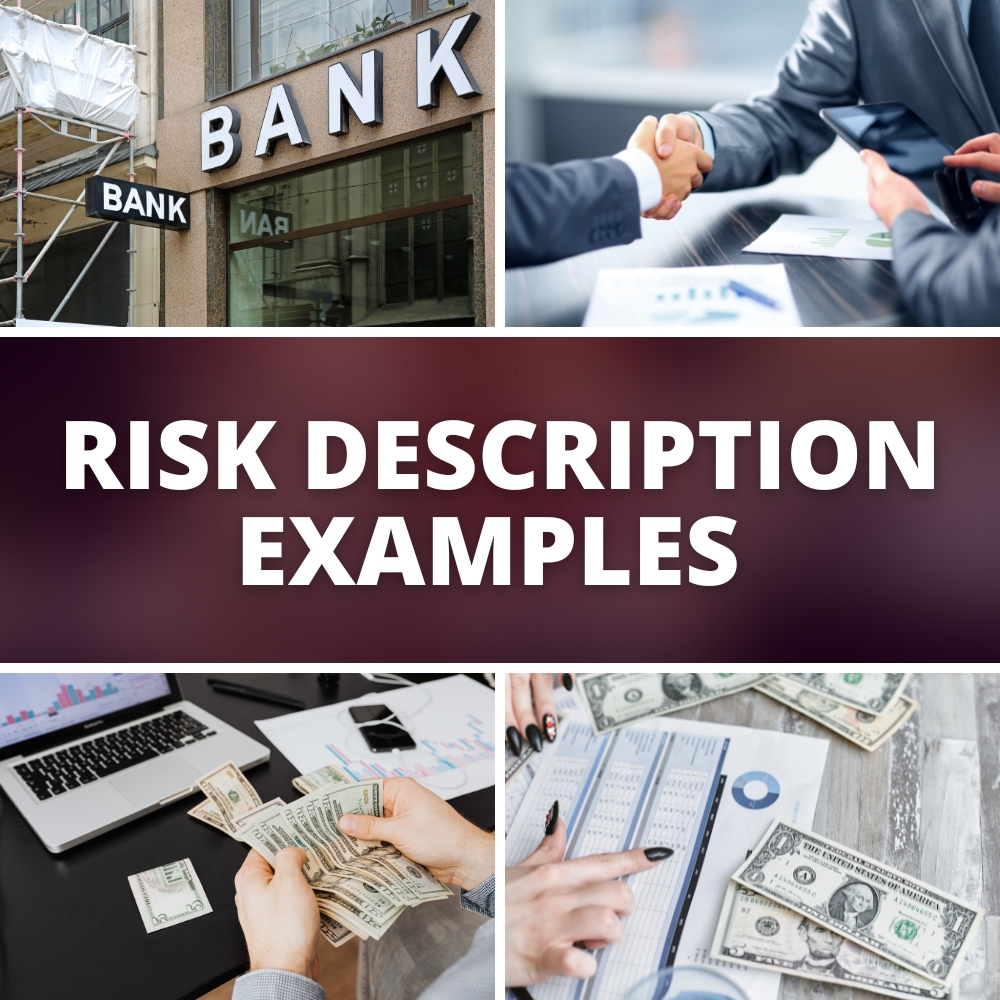9 Risk Description Examples
These Risk Description Examples will provide organizations with a valuable tool in identifying, assessing and mitigating risks that may arise in the course of business operations.
Financial, operational and customer-facing risks can all have significant impacts on an organization, but with the correct strategies in place, these risks can be managed and minimized.

By understanding the risks associated with their business, organizations can ensure they are prepared for any potential challenges.
9 Risk Description Examples
Operational risks in business come from unexpected events or gaps in operations. Examples of operational risks include supply chain or partner-related delays, data loss or data breaches, or problems with executing business operations. These risks can have the potential to affect production, sales, cost structure, or the overall business objective.
Financial risks are associated with liquidity and leverage. They include credit or liquidity risk, undercapitalization, or the risk that a company cannot meet financial commitments, inability to manage cash flow, and foreign currency risk.
- Market Risk is the risk of loss due to changes in the value of assets or markets, such as stocks and bonds. Examples of market risk can include downturns in the stock or bond markets, or changes in exchange rates.
- Credit Risk is the risk of loss due to an inability to meet financial obligations, such as loans or bonds. Examples of credit risk can include loan defaults, breaches of contract, or changes in credit ratings.
- Mortgage Risk is the risk of loss due to changes in the value of real estate or mortgages held by an organization. Examples of mortgage risk can include changes in housing prices, changes in interest rates, or defaulting on mortgaged debt.
- Investment Risk is the risk associated with securities, investments, and financial instruments, such as stocks, bonds, commodities and derivatives. Examples of investment risk can include changes in market conditions, unexpected returns on an asset, or changes in an investment fund’s underlying holdings.
- Liquidity risk is the risk that an organization will not be able to meet its short-term financial obligations. Examples of liquidity risk include the inability to meet short-term obligations such as payroll or debt payments, or an unexpected cash flow disruption. Liquidity risk can arise from a number of sources, such as an unexpected decrease in cash reserves, a change in market conditions, or an increase in long-term debt. Organizations need to have a strong liquidity risk management plan in place to ensure their financial sustainability.
Reputational risk occurs when a firm, such as a large corporation, is exposed to public criticism and negative publicity. This might arise from a breach of trust or an ethical violation. Reputational risk can have a long-term negative impact on a business’s brand and adversely affect sales, profit margins, and market share.
Economic risk refers to changes in the economy, markets or businesses that can potentially have a negative impact on a company or sector. Examples of economic risks include fluctuations in consumer demand, recessions, or competitive changes in a company’s market. Economic risks can arise from both internal business practices and external market forces, such as changes in consumer behavior, political decisions, or changes in monetary policy. Organizations must be aware of their potential risks and develop strategies to effectively manage them.
Risk management is essential for businesses of all sizes. Knowing which type of risk your business faces and developing a plan to mitigate the potential impact of these risks can help reduce their impact and keep your business running successfully. Developing a culture and management protocols to identify and manage risk is a critical part of any operating plan.
More Risk Description Examples are coming soon…
